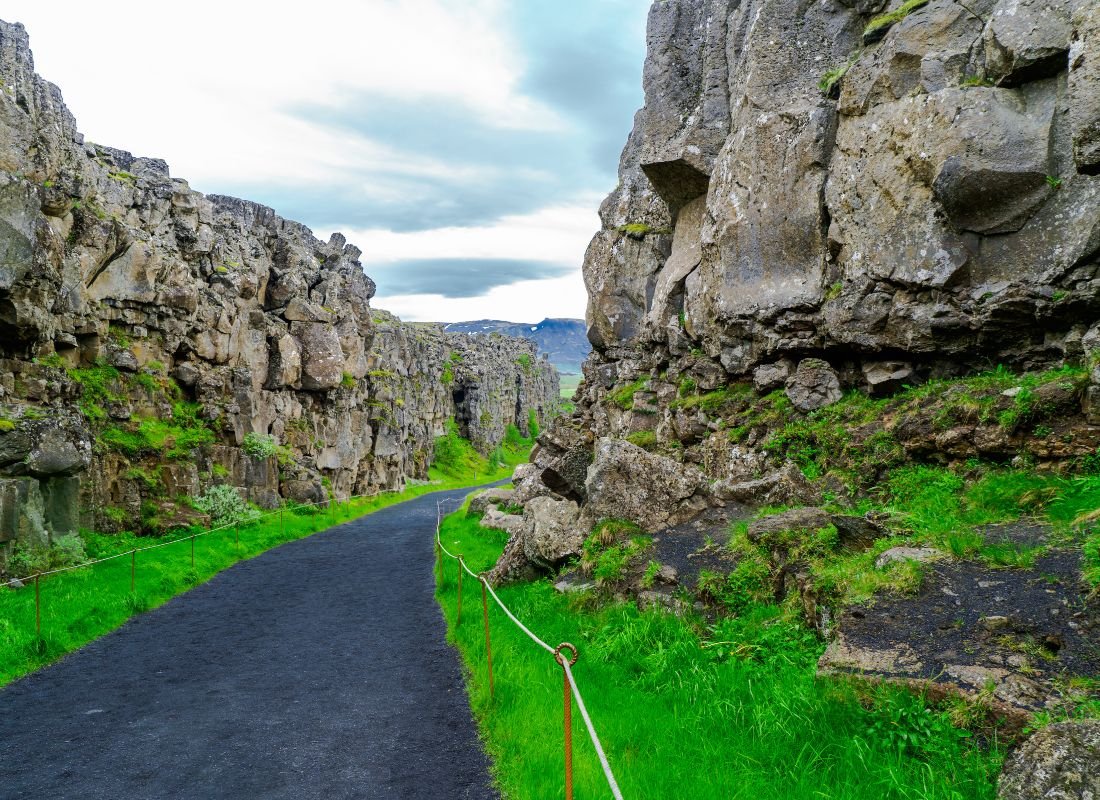
Mid Atlantic Ridge in Iceland
Did you know Iceland has a ridge that comes up from the ocean floor and sticks out of the ground? Iceland sits on an oceanic tectonic plate separate from the North American plate. The Mid-Atlantic Ridge stretches down all around the Atlantic Ocean. A portion of the ridge is sticking up out of the ground just on the edge of Reykjavík, Iceland.
Have you ever heard of the Mid Atlantic Ridge? it’s quite a fascinating subject. Many people believe the globe is flat, but after reading this piece, they will be surprised.
Iceland is divided into two tectonic plates; the Eurasian Plate and North American Plate. The two plates are slowly moving apart, and due to convection currents within the mantle, this separation is accompanied by episodes of generation of new crust along the Mid-Atlantic Ridge. These episodes are known as flood basalts.
The largest flood basalt eruption in this area of the world occurred between 13 million and 8 million years ago, creating the Iceland plate. The eruptions occurred in the deep sea, but as they progressed onto land, layers of different lava accumulated to form basaltic lava andesite stratified rock formations up to 7 km thick.

Formations Explained
The thickness of these formations can be explained by the large amount of erupted material that spread over a large area, forming very large lava fields. The material that erupted was primarily basalt, with andesite and rhyolite being present in lesser quantities. The chemical composition was tholeiitic basalt composed mainly of Ca-poor pyroxene, clinopyroxene, plagioclase, and Ca-rich riolite with minor amounts of magnetite and ilmenite.
The Mid Atlantic Ridge is an underwater mountain range that runs down the center of the Atlantic Ocean from a northern point near Iceland to a southern point near the Antarctic Peninsula. This divergent tectonic plate boundary extends for more than 65,000 kilometers (40,000 miles).
The ridge marks the line where new oceanic crust is formed by volcanic activity and then moves away from the mid-ocean ridge with the spreading of the ocean floor.

Movement of the Massive Plates
Tectonic plates are composed of lighter material than oceanic crust, so they tend to float above them. The plates move on top of the mantle due to convection currents within the mantle, which are created by heat released at mid-ocean ridges and carried around the planet by material rising from below. The movement of these massive plates over Earth’s surface is responsible for earthquakes, tsunamis, and volcanoes.
A diverging plate boundary, such as the Mid-Atlantic Ridge, is an example. Between two tectonic plates moving in different directions, divergent borders emerge, with neither plate overlaying the other. Because they occur as bits of crust move apart, these boundaries are known as “divergent.”
To the north, it divides the Eurasian and North American Plates from the African and South American Plates. The ridge stretches about 6600 kilometers from a connection with the Gakkel Ridge (northwest) to a junction with the Cayman Spreading Center (southeast) (4000 miles).
Tectonic plates are connected by oceanic ridges such as this one, which forms as a result of seafloor spreading. These ridges are generally less than 10 km (6 mi) wide, and most are much narrower, but they nevertheless help connect tectonic plates across distances up to 70 degrees of longitude. The Mid-Atlantic Ridge is a submerged mountain range that contains continental shelves, deep ocean tunnels, and underwater volcanoes.

